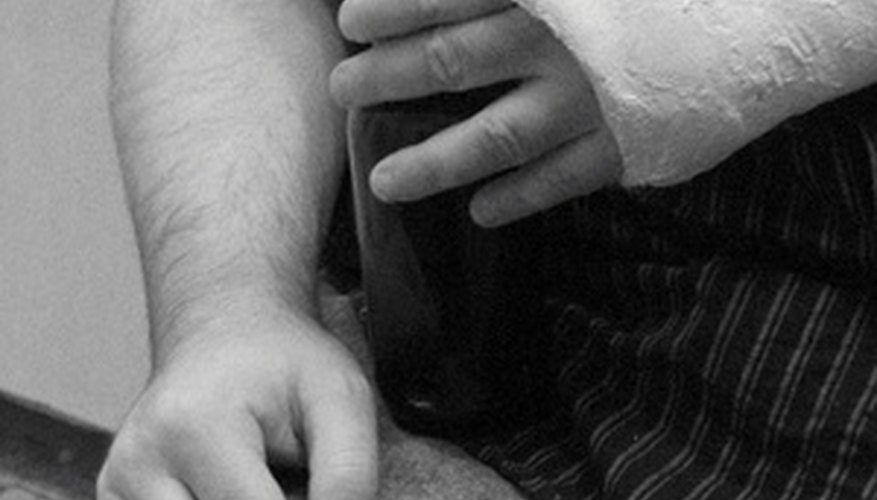Plaster of Paris, a cement made with gypsum (hemi-hydrated calcium sulphate), can neither be sanded nor is it waterproof. Heavier than fibreglass, this substance chips easily and is subject to mould. Because it dries quickly and does not shrink, it can be a difficult medium to fully replace.
Orthopaedics
Due to its rigidity and to the fact that it does not shrink, plaster of Paris has long been used for casts for broken limbs. However, substitutes such as fibreglass, resin and preformed plastic components often replace it as a cast material in orthopaedics.
Applied like the standard elastic wraps, new synthetic casting materials that consist of fabric infused with resin that sets up at room temperature or malleable fibreglass containing polyurethane resin are quickly replacing the traditional plaster of Paris cast. According to the American Academy of Orthotists and Prosthetists, this type of casting tape is quicker, requires less energy and produces a better quality of impression than does plaster of Paris.
According to D.R. Gunn, Professor of Orthopaedic Surgery at the University of Singapore, spinal diseases which traditionally called for full-body casts in plaster of Paris are being replaced by polystyrene foam for both anterior and posterior shells.
- Due to its rigidity and to the fact that it does not shrink, plaster of Paris has long been used for casts for broken limbs.
- According to D.R.
- Gunn, Professor of Orthopaedic Surgery at the University of Singapore, spinal diseases which traditionally called for full-body casts in plaster of Paris are being replaced by polystyrene foam for both anterior and posterior shells.
Fine arts
Gesso is a mix of plaster of Paris and glue used as a surface for painting and as a base for low relief or carved surfaces before painting or gilding. Alternatives include chalk and water, lime and water, soy powder and water, acrylic undercoat from the hardware store, matt medium or gelatin.
Crafts
Plaster of Paris has long been a staple in simple crafts.
For simple, small projects use either spackle as a wall filler or latex moulding material.
Also, for an alternative to the classic paper mache fixative try two parts white all-purpose glue to one part water or 2 parts flour to one part water. For clear "paste" add 1 heaping tbsp flour to 1 cup boiling water. In addition try liquid starch or wallpaper paste or white all-purpose glue, salt and pulp from newspaper, lint or egg cartons. You can also boil a concoction of powdered cornstarch and cold water to make a glue.
- Plaster of Paris has long been a staple in simple crafts.
- Also, for an alternative to the classic paper mache fixative try two parts white all-purpose glue to one part water or 2 parts flour to one part water.
Carving
Carving with plaster of Paris has long been a favourite art class project, but some alternative carving materials include soft wood, spackle, hard rock such as limestone and granite, softer rock such as sandstone or more malleable materials like wax and soap. Also, consider carving florist foam, styrofoam, butter, snow and ice.
Metal casting
Bronze and other metals casters traditionally used wax in lieu of plaster of Paris.
For plasters used for making cast gamer miniatures, Void Gamers suggest dental plasters such as Die Keen and Excalibur, Durham's Rock Hard and patching cement.
Other hobby casting
Hobbyists find plaster of Paris moulds to be heavy and bulky. Some alternatives incorporate resin containing hollow sphere filler, rotocasting (a form of rotational moulding), injection moulding, blown moulding, silicone moulds and expanding foam.
